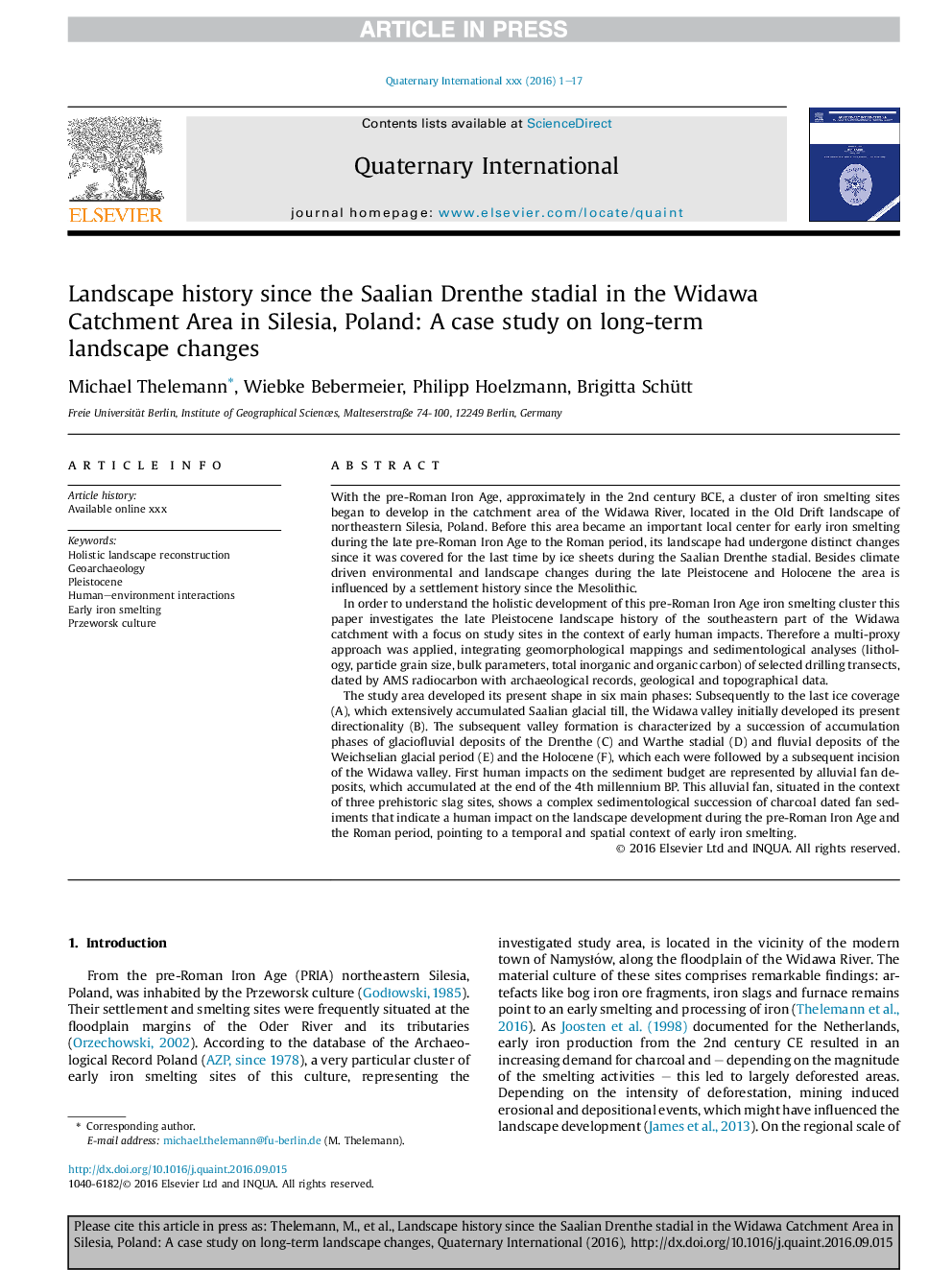| Article ID | Journal | Published Year | Pages | File Type |
|---|---|---|---|---|
| 7451048 | Quaternary International | 2018 | 17 Pages |
Abstract
The study area developed its present shape in six main phases: Subsequently to the last ice coverage (A), which extensively accumulated Saalian glacial till, the Widawa valley initially developed its present directionality (B). The subsequent valley formation is characterized by a succession of accumulation phases of glaciofluvial deposits of the Drenthe (C) and Warthe stadial (D) and fluvial deposits of the Weichselian glacial period (E) and the Holocene (F), which each were followed by a subsequent incision of the Widawa valley. First human impacts on the sediment budget are represented by alluvial fan deposits, which accumulated at the end of the 4th millennium BP. This alluvial fan, situated in the context of three prehistoric slag sites, shows a complex sedimentological succession of charcoal dated fan sediments that indicate a human impact on the landscape development during the pre-Roman Iron Age and the Roman period, pointing to a temporal and spatial context of early iron smelting.
Related Topics
Physical Sciences and Engineering
Earth and Planetary Sciences
Geology
Authors
Michael Thelemann, Wiebke Bebermeier, Philipp Hoelzmann, Brigitta Schütt,
